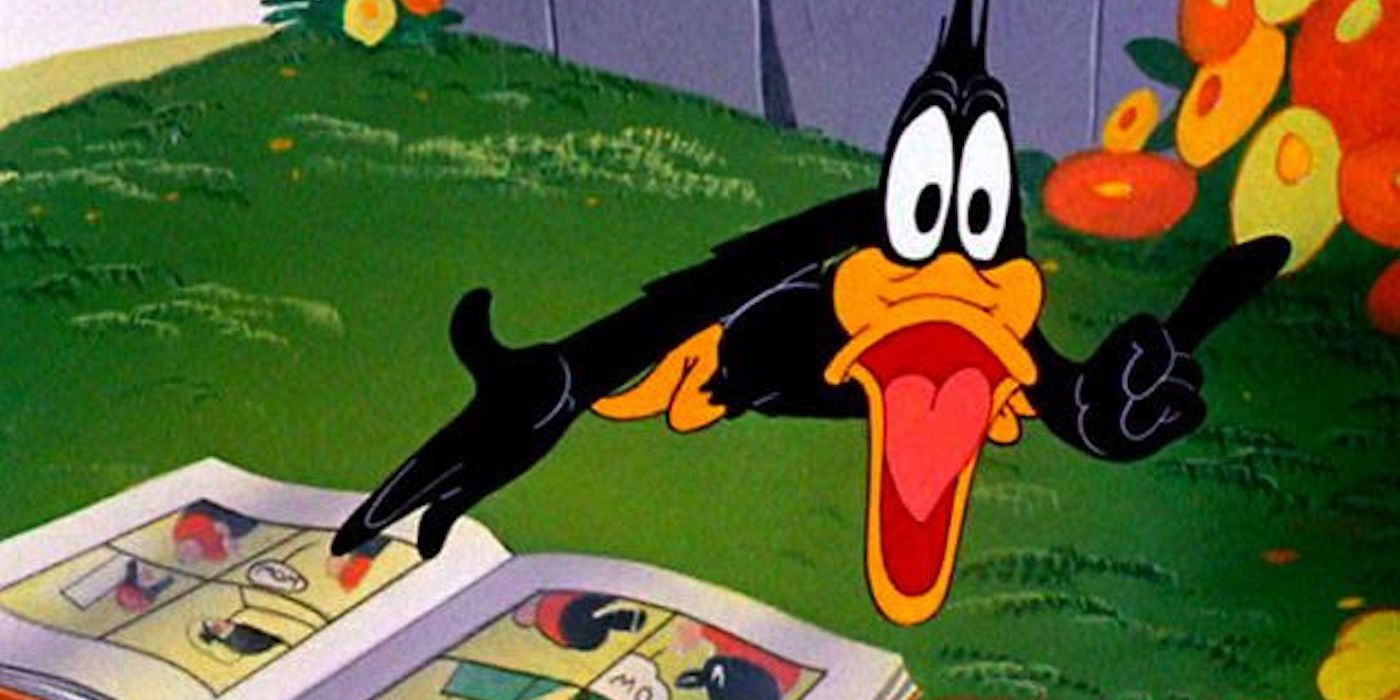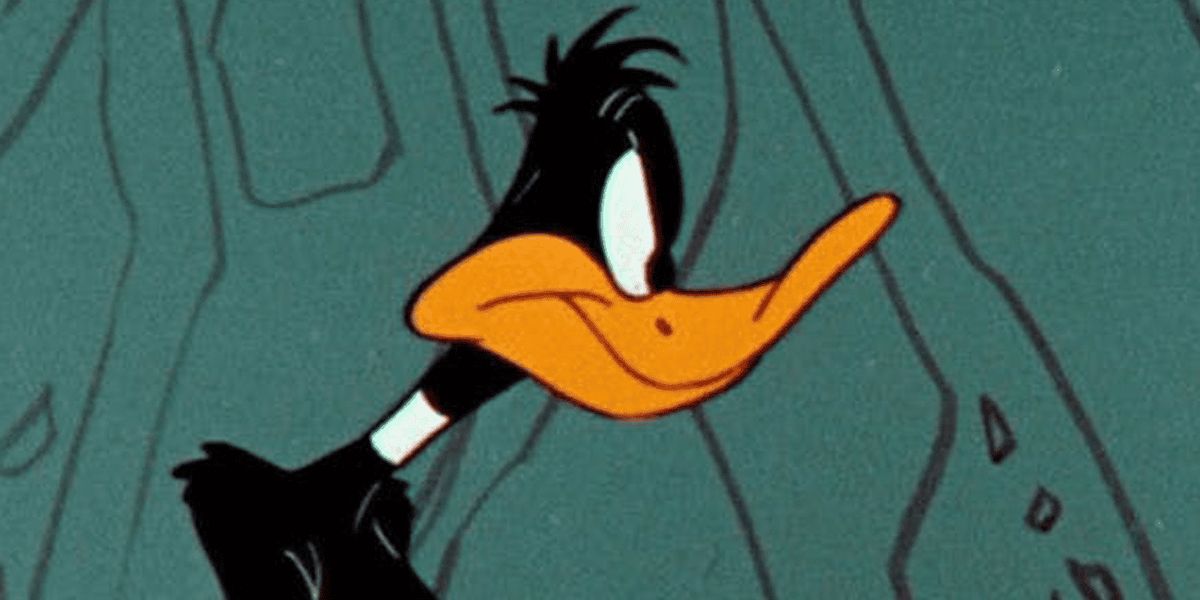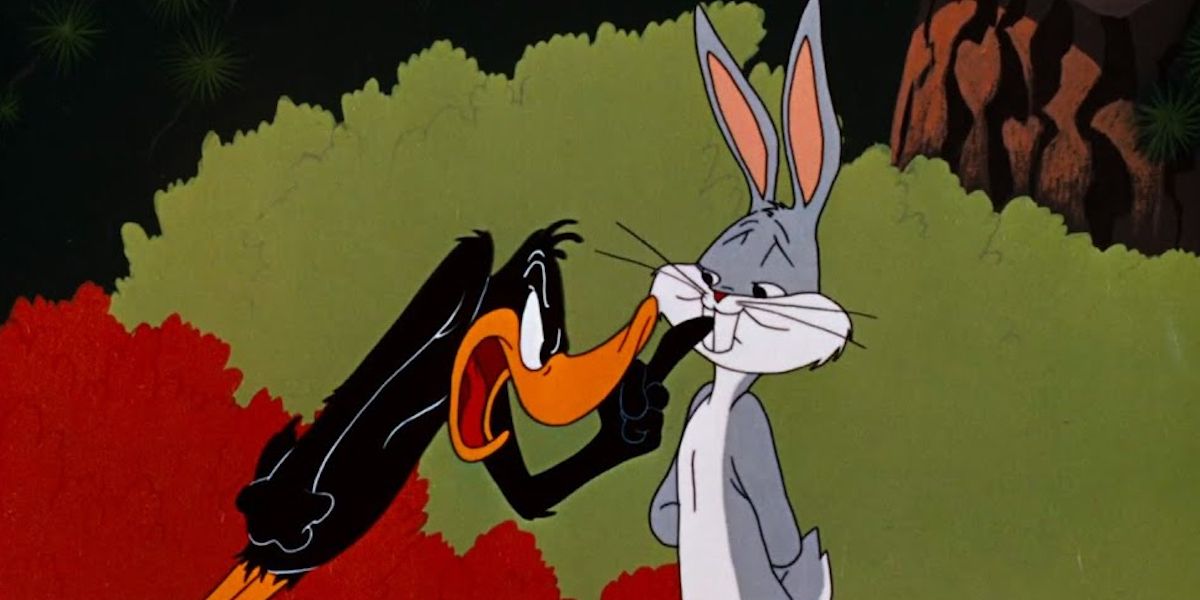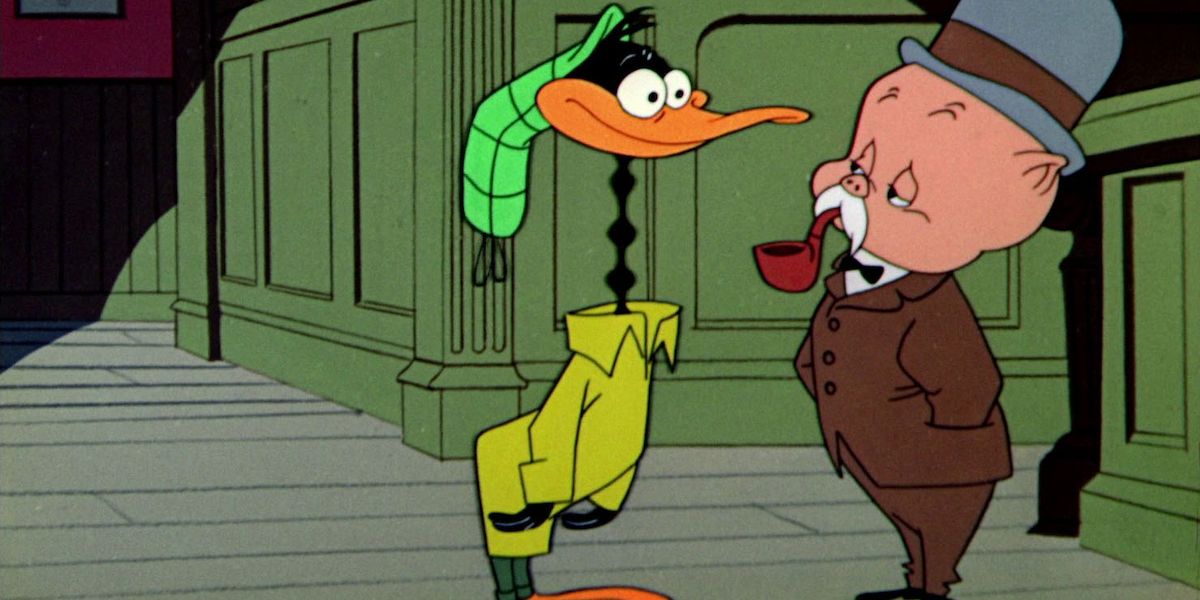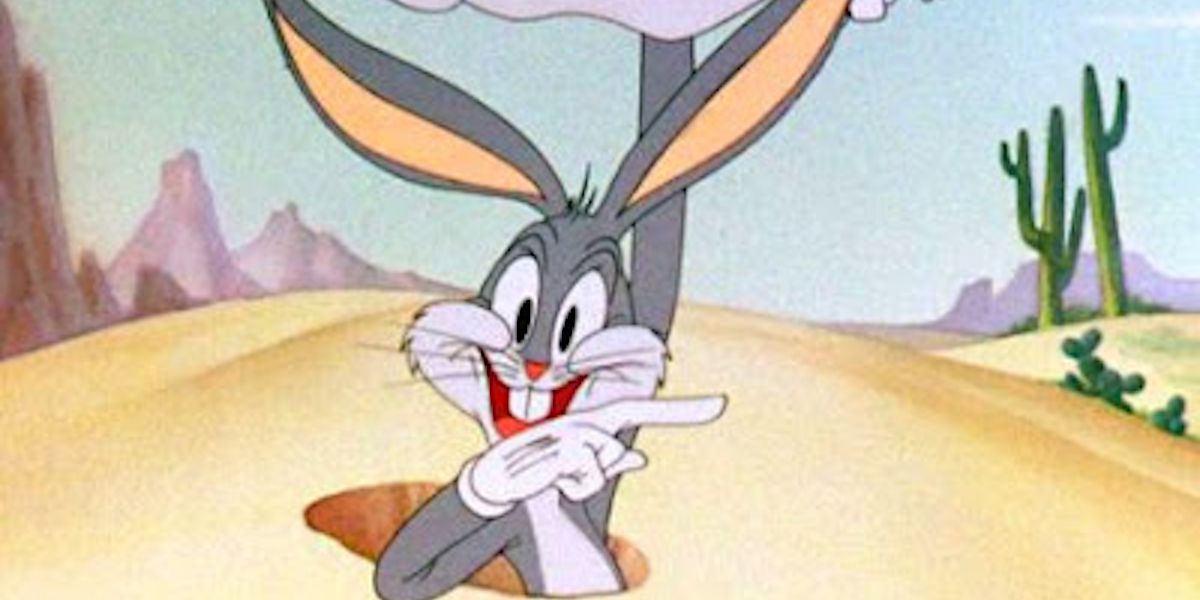If you’ve ever broken out the phrase, “you’re despicable!” with a heavy lisp a la Daffy Duck, you can thank Looney Tunes director Chuck Jones. If you enjoyed the antics of Gogo Dodo on Tiny Toon Adventures, you can thank animator Bob Clampett. And if you’ve grown up loving Bugs Bunny, Porky Pig, and the rest of the Looney Tunes, you can thank them both. Jones and Clampett came up together as animators under the madcap director Tex Avery who made the Looney Tunes funny. From him, they learned the art of making cartoons into irreverent, fast-paced laugh riots. Each in his time was awarded a director’s chair and his own unit. The films they made are among the most beloved of the original Looney Tunes and Merrie Melodies – and among the most influential on modern interpretations.
It's a shame the two men didn’t get along. And by “didn’t get along,” I mean, “fell into a bitter and clandestine feud throughout their adult lives.” Just why they were such enemies isn’t clear, nor does it appear to be a rivalry fought with equal fury by both sides. They were brothers-in-arms under Avery, though elder director Friz Freleng recalled that they “[squabbled] like kids with sibling rivalry more or less since they were kids,” as quoted by animation historian Thad Komorowski. A promotion in 1936 seems to have been the major bone of contention. Animation historian Milt Gray (admittedly a strong Clampett partisan) recalled interviews he and Michael Barrier conducted with Jones and Clampett about that fateful year. Jones’s story was that they were meant to become co-directors together, but Clampett used a fake illness to take the job all for himself. Clampett denied the charge, and the image Gray took from his account paints Jones as the assistant director to Clampett.
Things snowballed from there. Jones, rarely in the public eye but frequently in animation circles, aired his grievances with Clampett. He included accusations of gag thievery and stealing credit for characters he had nothing to do with. To hear Gray tell it, Clampett was hurt by the accusations and never returned fire on his embittered, territorial one-time friend. But Clampett did brazenly claim ownership of characters and designs he had nothing to do with, and other Warner Bros. luminaries besides Jones complained about it. Legendary voice artist Mel Blanc went so far as to call Clampett “an egotist who took credit for everything” in his autobiography. A poke around corners of the Internet occupied by animators and animation fans will turn up the proteges and acolytes of both men continuing the row, repeating and exaggerating accusations.
Being too young and too inconsequential to have met either man, I have no read on who was more on the level. Knowing that two of Warner Bros. finest directors bickered so has made no difference in how much I enjoy their films. And frankly, the more interesting aspect of the Jones/Clampett feud isn’t their personal history, but their different approaches to the Looney Tunes stars. Both men wore their debt to Avery on their sleeves throughout their careers at Warner Bros., and they were clearly working with the same characters. But they each put their own spin on things, and theirs are some of the most recognizable fingerprints if you know what to look for.
Clampett was much more of a direct heir to Tex Avery and his “anything for a laugh” philosophy almost from the moment he got his director’s chair. Both men reveled in fast pacing, the jokes coming a mile a minute, with many of them emphasizing all the things animation could do that were impossible in real life. Clampett’s own innovations included nods to the surrealist movement, thin and elastic linework around characters who perform the most spectacular wild takes, and a high level of casual, amoral cruelty. His was a world of no rules, where anything went and everyone was out for a laugh at someone else’s expense.
Jones was a work in progress as a director. Many of his early efforts looked to the Silly Symphonies being produced by Walt Disney at the time, and are oft regarded by animators as well-drawn but overly saccharine imitations. By the late 1940s, and especially the 1950s, Jones had found his niche. The quality of the animation remained high, and now, it came with comedy. His cartoons had fewer gags per second and a slightly slower pace, but the gags that were present were latched onto tighter structures borne of character. Rules were Jones’s forte, rules and the personalities who either dictated or suffered under them.
The gap between Clampett and Jones becomes most apparent when you look at how they handled the two biggest names in the Looney Tunes roster: Bugs Bunny and Daffy Duck. They weren’t so far apart with Bugs. In both their films, the rabbit is a confident Brooklyn/Bronx smart aleck who could go toe-to-toe with nearly anyone. But Clampett put more of a devil into Bugs. He made him more proactive, someone willing to pick fights or just play mischievous bully to whichever poor sap stumbled into his territory. He was also more willing to let Bugs meet his match – see “Falling Hare,” the rabbit’s famous encounter with the gremlin. Jones’s Bugs was more of a comic hero, a marriage of Groucho Marx and Douglas Fairbanks. His Bugs was content to mind his own business until provoked, was often more low-key and sly in outwitting his foes, and was more consistently a winner – see “Bully for Bugs” for one of the purest samples. It’s worth noting that Freleng and Robert McKimson, another prominent Looney Tunes director, tended in that direction for Bugs as well.
But Clampett and Jones had such divergent approaches to Daffy Duck that it was almost as if they were working with separate characters. Clampett took the leaping, whooping, slobbering duck Avery introduced in “Porky’s Duck Hunt” and ran with it. He gave Daffy just a tad more focus in his lunatic ravings and set him to work destroying such lofty establishments as modern medicine, Dick Tracey comics, and the draft board. Like his Bugs, Clampett’s Daffy could lose – badly – but he was always happy and hyper.
Jones started out with a very similar Daffy in films like “Daffy Duck and the Dinosaur” in 1939. But by the time Jones reached his zenith as a director, his conception for Daffy had completely altered. Daffy’s joy, his hyperactivity, and his success rate plummeted. Instead, he was a desperate and deluded seeker, manically striving to prove himself a heroic figure that he wasn’t or conniving to win riches, fame, or survival at someone else’s expense (usually Bug’s). Inevitably, fate, luck, and Daffy’s own temper and impatience did him in. Perhaps acknowledging the darker sides of his own character that fueled his feud with Clampett, Jones once said: “Bugs Bunny…[is] what I’d like to be, but Daffy is what I know full well I am.”
As with Bugs, other directors gradually drifted towards the Jones version of Daffy. This wasn’t necessarily a matter of preference. By the times Jones was riding high, Clampett had left Warner Bros. The directors still active in the 50s and 60s would perhaps inevitably develop along comparable lines. But in the decades after the Looney Tunes ended their theatrical run, the Jones vision of Bugs and Daffy left the strongest influence on later efforts – TV movies, network promos, cameos in shows and films. Jones’s shorts were ubiquitous on programming blocks of the Looney Tunes on TV, further enhancing the impression that his were the takes on Bugs and Daffy.
Which they are, so far as I’m concerned: I admit my partisanship for Chuck Jones. His Bugs is a more commendable trickster, his Daffy a more multifaceted maniac, and his rules-and-character-based comedy the funnier for having a structure to rattle within. That’s not to say his every film was a gem, and that’s not to knock Clampett’s work; it can become a bit too mean-spirited for my tastes, but it’s still plenty funny.
And it’s not to say that I think it's a good thing that latter-day Looney Tunes aped Jones for so long. One of the charms of the original Looney Tunes is seeing the distinct approaches of Jones, Clampett, Avery, Freleng, McKimson and the others, and how those approaches evolved over years and decades. To latch onto what Jones had arrived at by the 50s and early 60s and repeat it ad nauseam is far from that spirit. So, for that matter, is the tendency to parrot Clampett and Avery in HBO Max’s Looney Tunes Cartoons, which taps so deeply into their style that it has little identity of its own.
The one modern take on the Looney Tunes I would say attempted to forge its own identity was The Looney Tunes Show, with mixed results. Seeing Bugs as a straight man barely holding it together in a sea of fools – basically Kermit the Frog with a New York accent and more sarcasm – never sat well with me. But the show’s take on Daffy Duck was interesting in how it married the strongest traits of Jones and Clampett’s Daffys to make something new. The Looney Tunes Show’s Daffy was just as greedy, deluded, self-serving, and put down by life as Jones would have him; at the same time, he was often happy in his own skin and prone to hyperactivity and nonsensical triumph, as Clampett would have him.
The result was one of the funniest characters of the show, and a fine example of how to take inspiration from filmic forefathers without descending into pale imitation. Could Jones and Clampett see the fusion of their approaches, they may well fall back into squabbling like sibling rivals, stealing credit and spreading calumnies. But the result – like nearly everything they did with the Looney Tunes since they entered Tex Avery’s unit – is still funny, and funny still trumps feuding.

